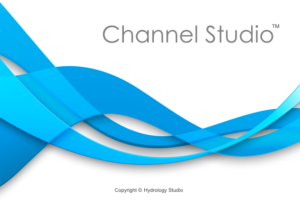Channel Studio uses the same energy-based procedures as it does for Channel sections with a few exceptions. During calculations the area of the bridge below the water surface is subtracted from the total area, and the wetted perimeter is increased where the water is in contact with the bridge structure.
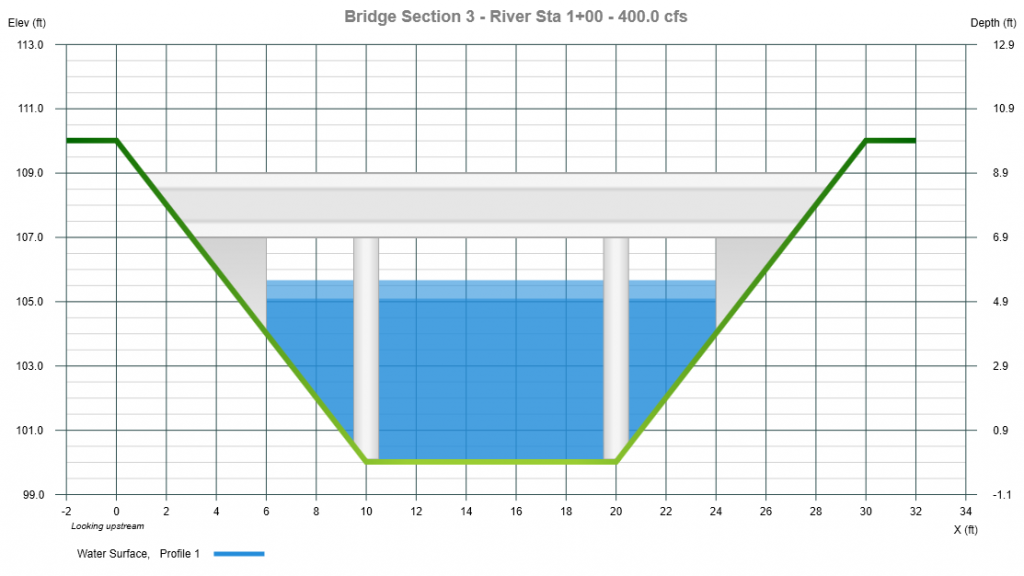
The program formulates two cross sections inside the bridge. One just inside the downstream end and the other just inside the upstream end. It combines the channel geometry information of the previous downstream channel section with the bridge geometry (abutments, deck and piers) and uses this newly-formed section for both up and downstream bridge sections.
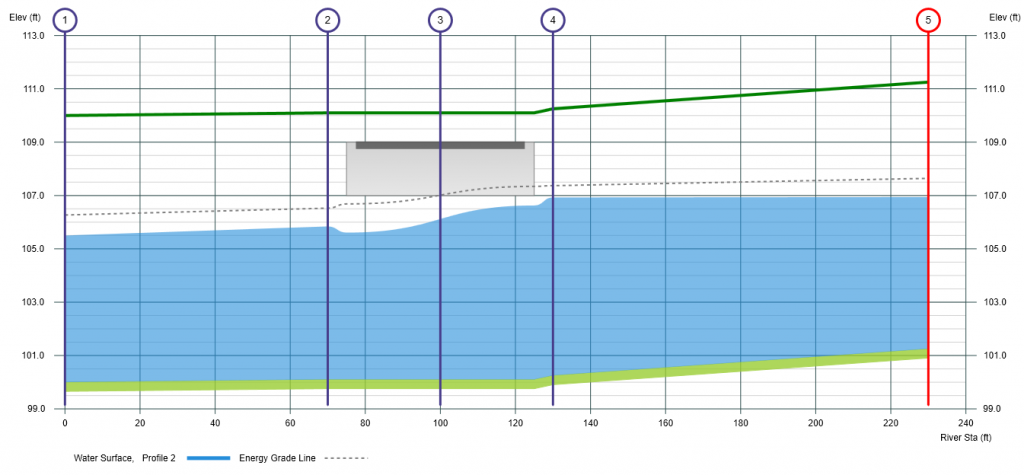
Channel Studio draws a realistic water surface using Bezier curves between from the downstream section to the bridge; through the bridge; and to the upstream section. These profiles are not assumed or made up, these are real results. Notice in the profile above how the velocity head changes (distance between the EGL and WS) as the flow passes through the structure.
Channel Studio does not compute supercritical profiles through bridge sections but it does compute critical depth automatically.
Bridge Pressure Flow
If the computed water surface elevation exceeds the lower bridge deck elevation on both upstream and downstream ends, Channel Studio will compute an alternate water surface elevation using the following orifice equation.

Where:
A = Net area of bridge opening
H = The difference between the energy grade line elevation upstream and the water surface elevation downstream
Co = Orifice coefficient, 0.80
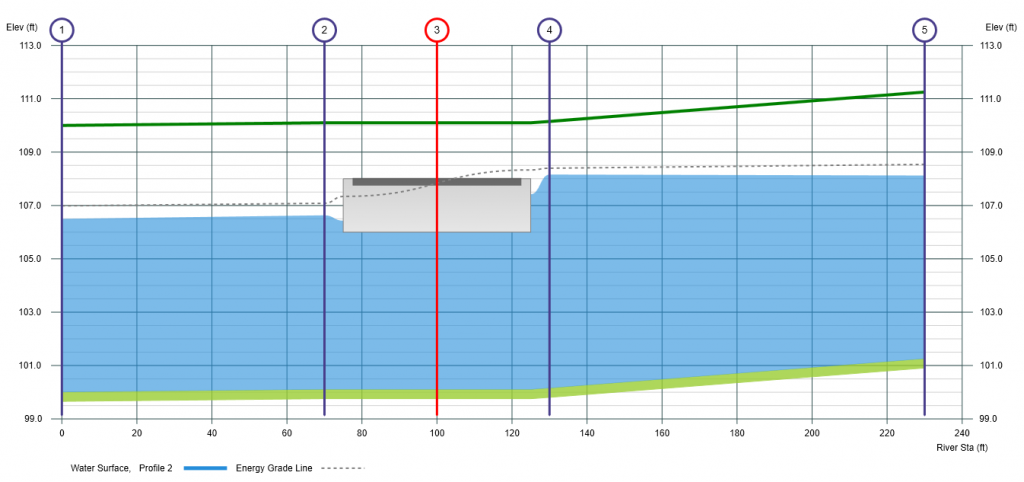
The pressure flow calculation is compared to the answer given by the Standard Step procedure. The higher of the two is used.
Bridge Weir & Overtopping Flow
If the computed water surface profile exceeds the top bridge chord elevation, Channel Studio will initiate an iterative procedure for computing overtopping flow, similar to flow over a broad crested weir.
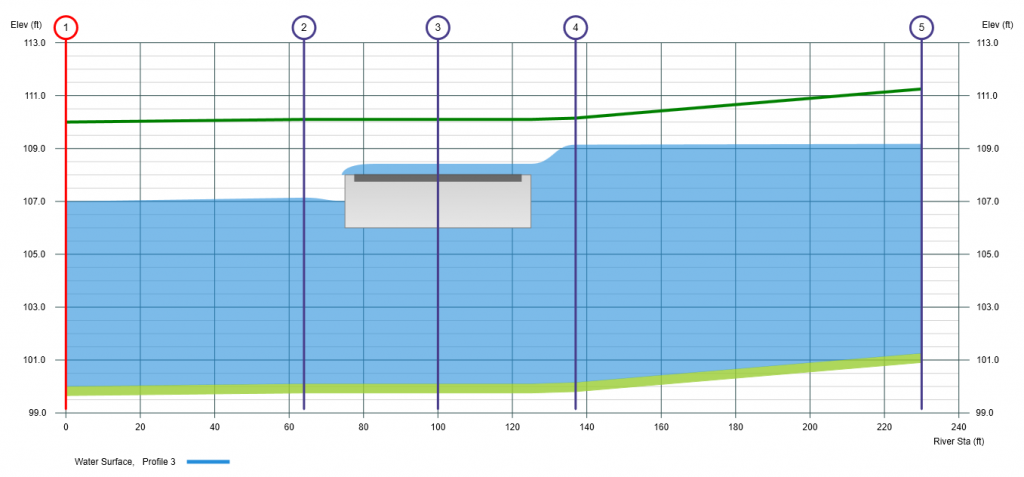
It is a simple matter to calculate the flow across the roadway for a given upstream water surface elevation using the weir equation. The problem is that the deck overflow plus the flow beneath the bridge flow must equal the total flow. A trial and error process is necessary to determine the amount of the total flow passing through the bridge and the amount flowing across the top chord.
Channel Studio uses the following broad crested weir equation:
![]()
Where:
Q = Overtopping flow
Cw = Broad crested weir coefficient, 2.66 (1.5)
L = Crest width
H = HGL – High Bridge Chord elevation (The approach velocity is neglected)
Adjustment for Submergence
Weir performance can be affected by submergence, i.e., when the tailwater rises above the weir’s crest and reduces the flow.

The equation for the reduction in flow is:

Where:
Qs = Submerged flow
Qr = Unsubmerged flow from standard weir equation
H1 = upstream head above deck
H2 = downstream head above deck
